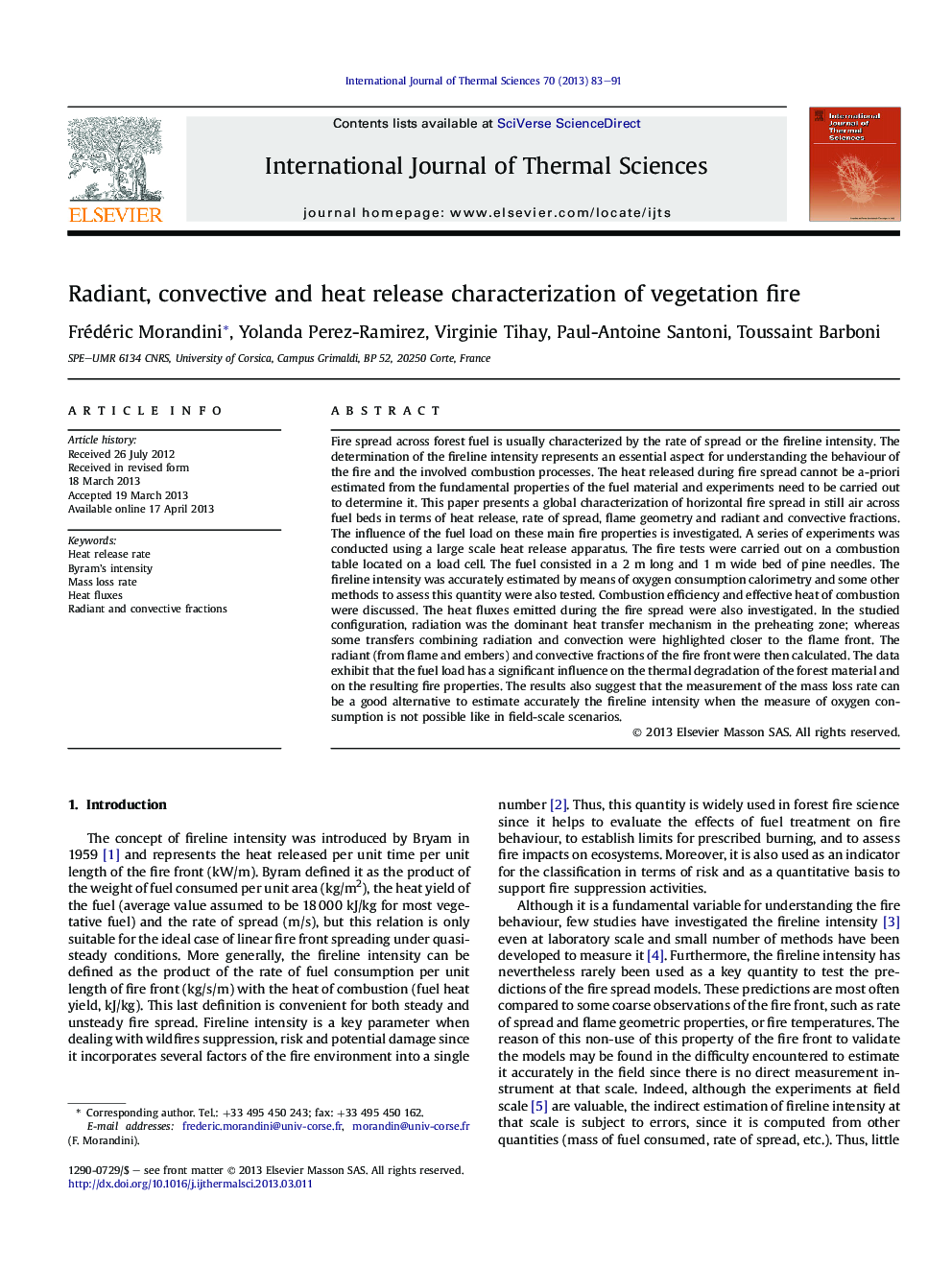| کد مقاله | کد نشریه | سال انتشار | مقاله انگلیسی | نسخه تمام متن |
|---|---|---|---|---|
| 668363 | 1458752 | 2013 | 9 صفحه PDF | دانلود رایگان |

• We conducted a series of fire spread experiments across beds of fuel.
• We measured the heat release rate, mass loss, heat fluxes and fire rate of spread.
• We estimated the radiant and convective fractions of the fire front.
• The fireline intensity can also be computed from mass loss rate.
• The convective fraction decreases as the fuel load increases.
Fire spread across forest fuel is usually characterized by the rate of spread or the fireline intensity. The determination of the fireline intensity represents an essential aspect for understanding the behaviour of the fire and the involved combustion processes. The heat released during fire spread cannot be a-priori estimated from the fundamental properties of the fuel material and experiments need to be carried out to determine it. This paper presents a global characterization of horizontal fire spread in still air across fuel beds in terms of heat release, rate of spread, flame geometry and radiant and convective fractions. The influence of the fuel load on these main fire properties is investigated. A series of experiments was conducted using a large scale heat release apparatus. The fire tests were carried out on a combustion table located on a load cell. The fuel consisted in a 2 m long and 1 m wide bed of pine needles. The fireline intensity was accurately estimated by means of oxygen consumption calorimetry and some other methods to assess this quantity were also tested. Combustion efficiency and effective heat of combustion were discussed. The heat fluxes emitted during the fire spread were also investigated. In the studied configuration, radiation was the dominant heat transfer mechanism in the preheating zone; whereas some transfers combining radiation and convection were highlighted closer to the flame front. The radiant (from flame and embers) and convective fractions of the fire front were then calculated. The data exhibit that the fuel load has a significant influence on the thermal degradation of the forest material and on the resulting fire properties. The results also suggest that the measurement of the mass loss rate can be a good alternative to estimate accurately the fireline intensity when the measure of oxygen consumption is not possible like in field-scale scenarios.
Figure optionsDownload as PowerPoint slide
Journal: International Journal of Thermal Sciences - Volume 70, August 2013, Pages 83–91